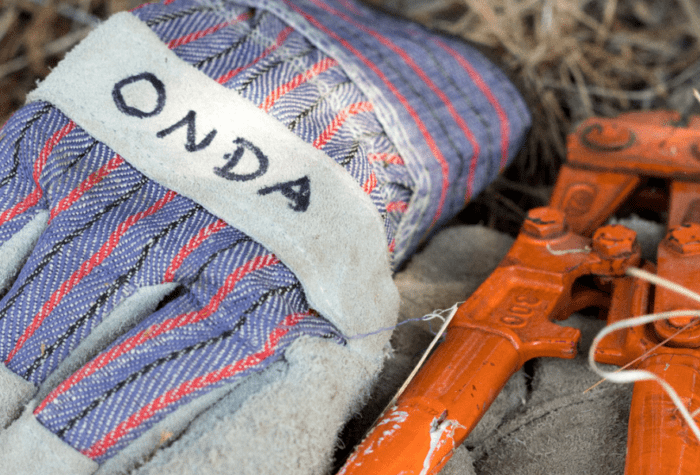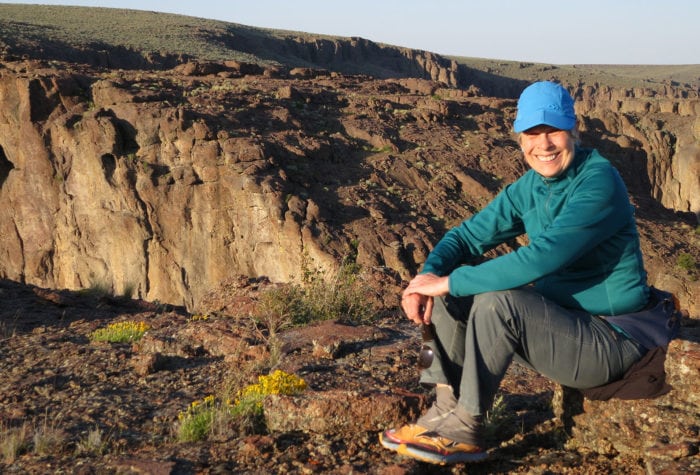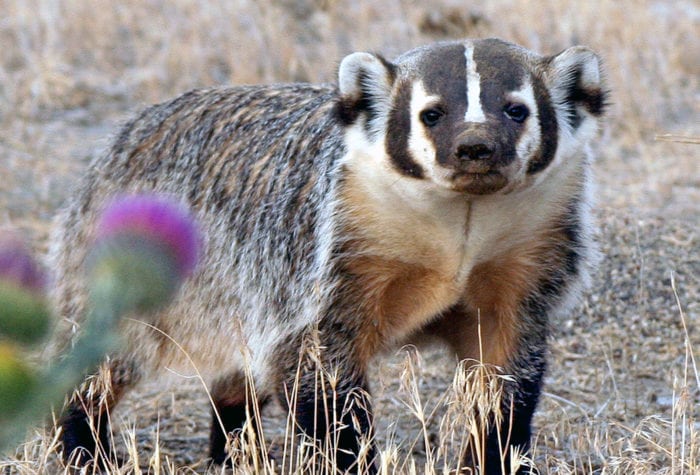Author: Gena Goodman-Campbell | Published: August 13, 2024 | Category: Look Back
This article originally appeared in The Source Weekly on August 7, 2024.
Restoring native grasslands in the high desert
What is so tiny that you can hold hundreds of them in a single handful, yet holds the key to restoration and climate resiliency in Oregon’s high desert?
A seed. Or rather, millions of tiny seeds, each of which holds the potential to grow into a native bunchgrass and help restore resilient, thriving desert grasslands.
Stretching some 12 million acres and covering half of the state, Oregon’s high desert is an ecologically vital landscape home to a wide range of birds, plants, fish, insects and animals that depend on its vast expanses of unbroken sagebrush steppe and grasslands to survive.

Native bunchgrasses are the unsung heroes of the high desert, providing food and shelter for wildlife and keeping the ecosystem in balance. Indigenous peoples of the high desert have used bunchgrasses since time immemorial for food, medicine and weaving material. While these plants can be easy to overlook, if you take the time to notice the different bunchgrasses growing all around us, you may, like me, begin to count bunchgrasses among your favorite high desert plants.
These grasses get their name from how they grow in individual bunches rather than carpeting the ground like the grass species used in lawns. Bunchgrasses are perennial plants, meaning the same plant can continue to grow season after season, as opposed to annual plants that die and regrow from seed each year. Unfortunately for the health of the high desert, this puts native bunchgrasses at a disadvantage when they are competing against nonnative annual grasses, like cheatgrass, that produce large amounts of seeds that sprout earlier in the year than native perennials.

Cheatgrass and other invasive annual grasses pose one of the biggest threats to the health of high desert grasslands and sagebrush steppe habitat. These grasses spread rapidly and currently impact millions of acres of public land and the many creatures that depend on a healthy ecosystem to survive. Not only does cheatgrass provide almost no value as a source of food and shelter for wildlife, it is also highly flammable when it dries out in midsummer, providing an accelerant for wildfires. And, cheatgrass invasion reduces the carbon storage potential of native grasslands, which studies have recently shown to be one of the most important carbon sinks in the world.
Largescale restoration efforts are growing across the West to tackle this issue. This summer, ONDA’s Tribal Stewards program — a partnership with the Lomakatsi Restoration Project and others that engages Indigenous young adults in paid stewardship and restoration work — is contributing to projects to restore native grasslands in eastern Oregon. The Tribal Stewards participants, many of whom are members of the Burns Paiute Tribe, are working on projects led by the East Cascade Plant Hub and National Park Service to increase the supply of native grass seed and plant materials for future restoration in the high desert.
On a recent warm and sunny morning, the Tribal Stewards fanned out across an open grassy hillside in the John Day Fossil Beds National Monument in search of Thurber’s needlegrass, a native bunchgrass that is a favorite food source for many species of wildlife, from birds and small mammals to deer and pronghorn. When they found a plant with ripe seeds ready for harvest, they gently ran their hands up the stem of the grass to strip some of its seeds into their collection bags. It’s hot, slow work, but the rewards are clear; each bag brimming with thousands of seeds that contain the hope of a healthier future for the high desert.
—Gena Goodman-Campbell is the Stewardship Director at Oregon Natural Desert Association, a nonprofit organization that protects and restores Oregon’s high desert public lands and waters.


